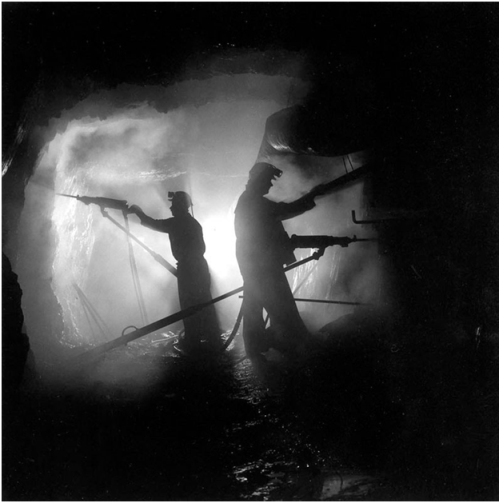
Click here for a selection of Canadian photographer Louie Palu’s mining photography: CAGE CALL: LIFE AND DEATH IN THE HARD ROCK MINING BELT
Sudbury art gallery exhibit explores roots of mining, but some find images troubling
Some say a photo exhibit on mining in Sudbury is perpetuating stereotypes about the industry and keeping young people from choosing mining as a career.
The exhibit Cage Call — currently on display at the Art Gallery of Sudbury — features underground photos from across northern Ontario. Thursday night, the gallery hosted a panel discussion on the image of the modern miner.
Mine Mill union president Richard Paquin said he knows a lot of the people in the photos hanging on the art gallery walls, as do his members — some of whom were not crazy about what they saw. “Some of them didn’t like [it] because it reminded them of the injuries we used to have,” he said.
“A lot of the pictures you see people missing things — missing an arm, one of them’s missing a foot.” There are also photos of miners in dirty coveralls, another, smoking cigarettes and drinking beer.























